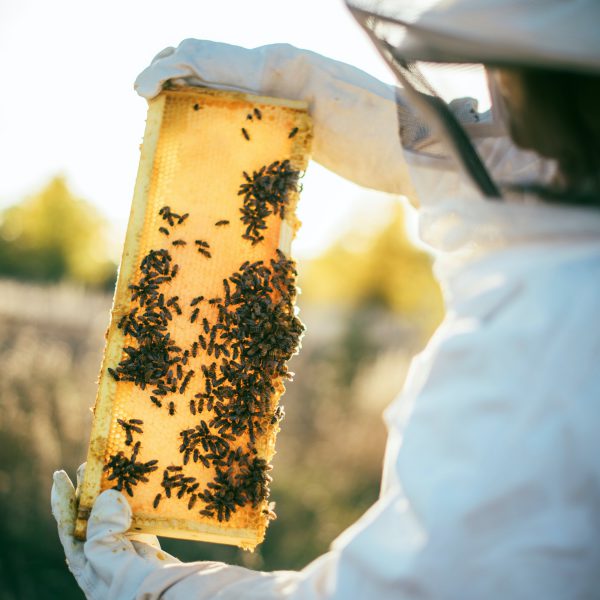
Learn about Bee Central's mission to save Australian honey bees.
The Bee Central Difference
- WA has an incredible opportunity to become the centre of all things active honey with our exceptional bee health, vibrant ecosystems, and unmatched bio-security.
- Encouraging environmental diversity should be a collaborative effort that the community, organisations, beekeepers, and farmers can participate in for mutual benefit.
- Sustainable agricultural practices are the way to keep farms in the hands of families and the best way to take care of the land long-term.
- Supporting ongoing bee education and research is the key to saving our bees worldwide.
- Improving the health of our environment and community goes hand-in-hand.

What is “Active” Bee Honey?
Human’s fascination with honey has spanned thousands of years across cultures all over the globe. As a result, we see honey used across numerous nutritional, cosmetic, medicinal, and industrial applications and featured in many traditional practices.
There are over 300 different types of honey, differentiated by the kind of nectar they are derived from that affects not only taste but also chemical composition. One of the most famous of these varieties is the active honey known as Manuka, produced from the flowers of the New Zealand native manuka bush or Leptospermum scoparium. Once analysed, researchers found Manuka honey to have additional antimicrobial activity beyond those common in traditional honey, attributed to its high levels of Methylglyoxal (MGO). Thus, firmly establishing Manuka as something of a super honey.
New Zealand’s extensive research into their native Manuka honey has been a driving force in raising the awareness and value of active honey worldwide.
However, New Zealand is not the only place to find trees with such powerful properties in their flower’s nectar. Australia is home to over 80 species of Leptospermum — 60 of which are in WA — that also have high levels of the same chemical identifiers. Subsequent testing of honey derived from these trees show it to be some of the strongest active honey in the world.
USC Honey lab senior chemistry lecturer, Dr Peter Brooks
Additionally, being free of the Varroa Mite and European and American foulbrood disease means Australia provides an incredibly healthy ecosystem for our bees. Add to that Western Australia’s extra layer of isolation, quarantine requirements, and biosecurity makes WA bee populations some of the healthiest on the planet. Our pristine environment and varied, unique flora create the perfect conditions for our WA bees to thrive now and into the future.


Bee Central and the community
Damian Green, Bee Central founder, and beekeeper since 2016, has always had an affinity for the natural environment. Watching a program about beekeepers using the Australian developed Flow Hive inspired Damian to start his professional journey into the world of bees and honey.
After discovering the plight of the world’s bees who are under threat by disease and realising that Australia’s bee population remained one of the healthiest on the planet, it drove Damian to create opportunities for both community and industry to help save the bees.
When searching for the perfect base for Bee Central, Damian knew that Western Australia would be one of the best locations for building a strong bee empire with its isolation and biosecurity — ultimately settling on WA’s Wheatbelt region. As a popular tourist destination, historic York will also become the home of the future Bee Shed discovery centre, a bee education and research hub.
For Damian, Bee Central has always been more than just a business venture. He went all in, moving to York and immersing himself fully in the local community. Engaging with his community meant any plans and projects would align with the people’s culture, values, and needs in that region.
Extending the opportunity to profit from this growing industry to farmers is also a core part of Damian’s vision. Through plantation partnerships, WA farmers can diversify their farm’s production and increase profitability. Meaning farms are staying within families, which encourages long-term stewardship of our unique landscape.